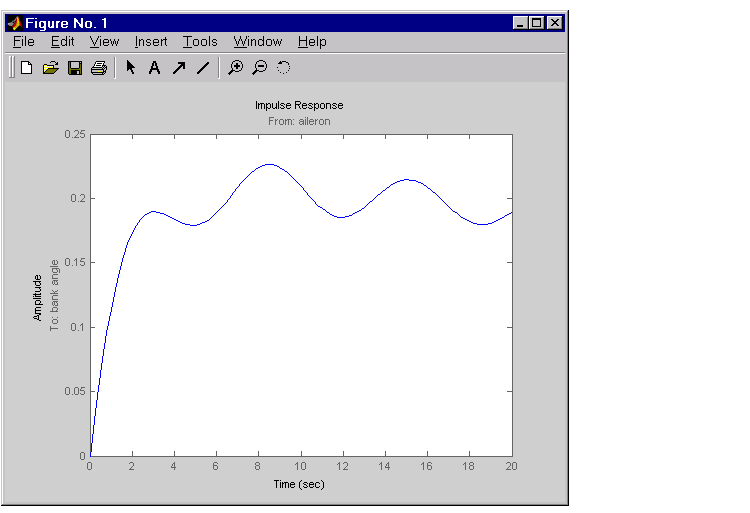

| Design Case Studies |   |
Open-Loop Analysis
First, perform some open-loop analysis to determine possible control strategies. Start with the time response (you could use step or impulse here).
The impulse response confirms that the system is lightly damped. But the time frame is much too long because the passengers and the pilot are more concerned about the behavior during the first few seconds rather than the first few minutes. Next look at the response over a smaller time frame of 20 seconds.
Look at the plot from aileron (input 2) to bank angle (output 2). To show only this plot, right-click and choose I/O Selector, then click on the (2,2) entry. The I/O Selector should look like this.

The new figure is shown below.

The aircraft is oscillating around a nonzero bank angle. Thus, the aircraft is turning in response to an aileron impulse. This behavior will prove important later in this case study.
Typically, yaw dampers are designed using the yaw rate as sensed output and the rudder as control input. Look at the corresponding frequency response.
From this Bode diagram, you can see that the rudder has significant effect around the lightly damped Dutch roll mode (that is, near  rad/sec).
rad/sec).
 | Computing Open-Loop Eigenvalues | Root Locus Design |  |